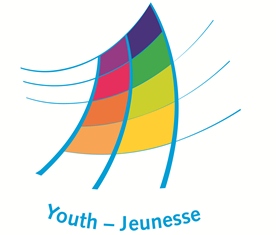Agenda 2020
 What is Agenda 2020?
What is Agenda 2020?
“Agenda 2020” is a medium-term strategic document on youth policy. It was unanimously approved by the youth ministers of almost 50 European States at the 8th Council of Europe Conference of Ministers responsible for Youth in Kyiv on 10-11 October 2008, and expresses the pan-European consensus on the principles, priorities and approaches.
 Achievements and lessons learned
Achievements and lessons learned
In March 2017, the Joint Council on Youth looked back at the key highlights and achievements of Agenda 2020 with a view to drawing some conclusions and picking up some pointers for implementing a new youth strategy in the future.
In working groups, the CMJ members focused on the three thematic priorities of: human rights and democracy; living together in diverse societies; and social inclusion of young people; and reflected on the following questions:
- what challenges and difficulties had been faced when implementing Agenda 2020;
- which issues still needed to be addressed within the framework of Agenda 2020;
- which lessons had been learnt that should be taken into account when developing the future “Youth sector strategy 2030”.
 Background documents
Background documents
- The future of the Council of Europe youth policy: AGENDA 2020, Directorate of Youth and Sport. Consultant: Dr. Gavan Titley
- Resolution CM/Res(2008)23 on the youth policy of the Council of Europe. Adopted by the Committee of Ministers on 25 November 2008.
 Political context
Political context
At the time, the specific context of youth policy was marked by the engagement of the member states to clarify the mission of the Council of Europe, to formulate its role vis-à-vis the European Union and to (re)-focus its priorities and action on its core mission. This process, which resulted in the Action Plan adopted by the third Summit of Heads of State and Government in 2005, involved also a reflection by governments on how to improve the efficiency of the Council of Europe in a context of budgetary constraints.
The “Agenda 2020” first set down the three main themes that European youth policy would address as priorities up to 2020: human rights and democracy; the promotion of cultural diversity; and social inclusion. In each of these three dimensions, a set of six specific topics (with several subject areas) defined in more detail the full range of activities. This was different from previous strategic documents in both tone and thematic scope.
The priorities for the Council of Europe youth policy and action:
Human rights and democracy
- Ensuring young people’s full enjoyment of human rights and human dignity and encouraging their commitment to achieving this;
- Promoting young people’s active participation in democratic processes and structures;
- Promoting equal opportunities for the participation of all young people in all aspects of their everyday lives;
- Implementing effectively gender equality and preventing all forms of gender-based violence;
- Promoting awareness education and action amongst young people on the environment and sustainable development;
- Facilitating the access of all young people to information and counselling services.
Living together in diverse societies
- Empowering young people to promote, in their daily life, cultural diversity as well as intercultural dialogue and co-operation;
- Preventing and counteracting all forms of racism and discrimination on any ground;
- Supporting initiatives of young people and their organisations in conflict prevention and management as well as post-conflict reconciliation by means of intercultural dialogue, including its religious dimension;
- Supporting youth work with young refugees, asylum-seekers and displaced persons;
- Further encouraging the development of sub-regional youth co-operation in Europe and beyond;
- Encouraging young people to promote global solidarity and co-operation.
Social inclusion of young people
- Supporting the integration of excluded young people;
- Ensuring young people’s access to education, training and the working life, particularly through the promotion and recognition of non-formal education/learning;
- Supporting young people’s transition from education to the labour market, for example by strengthening possibilities to reconcile private and working life;
- Supporting young people’s autonomy and well-being as well as their access to decent living conditions;
- Ensuring young people’s equal access to cultural, sporting and creative activities;
- Encouraging intergenerational dialogue and solidarity.



